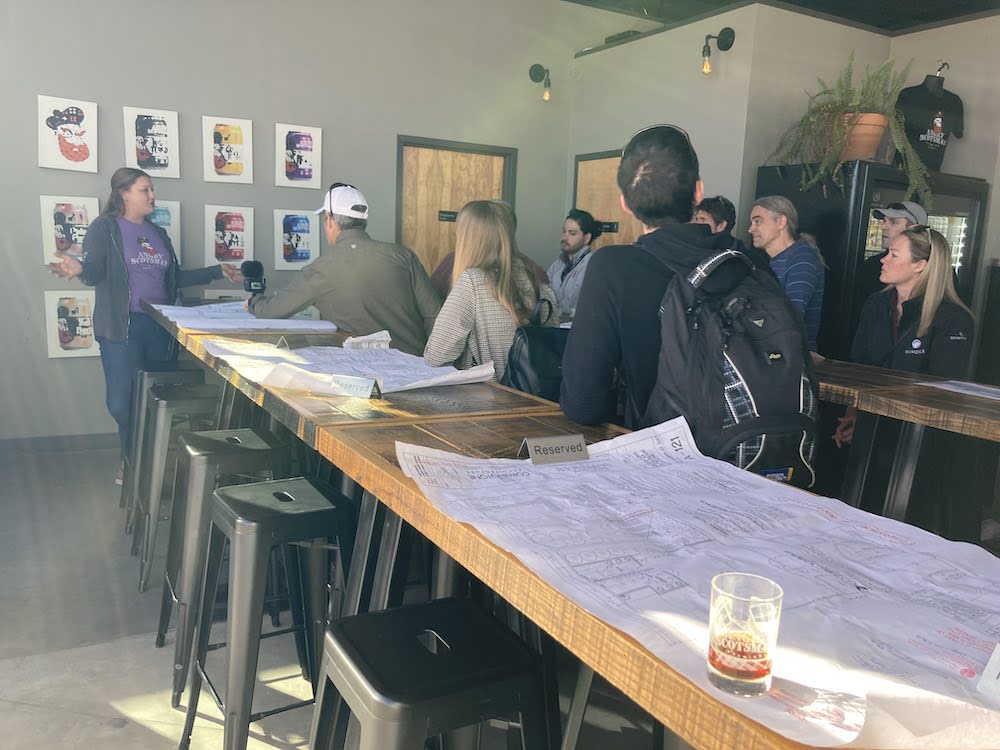
Oklahoma City grew by 14 percent in the last decade—a trend that might not have seemed possible to local leaders in the early 1990s. Speaking to a large crowd at CNU 30 in late March, those leaders rightly pointed out the important role that road design played in recent growth of the downtown. But a smaller group of attendees who toured the city by bicycle also saw the impact that a growing number of craft breweries are having in neighborhoods today.
The city owes a good part of its recent resurgence to Project 180, described by Rob Steuteville in CNU Public Square. Beginning around 2010, those efforts converted many streets from one-way to two-way, improved street crossings and sidewalks, and added a number of bike facilities. Similar improvements continue today, thanks to a series of voter-approved sales tax programs called MAPS. The benefits are clear to anyone walking or biking around the downtown, including those who participated in CNU’s bike tour, led by Ride OKC.

But street improvements are only part of the story, since many buildings in the downtown have sat underused or falling into disrepair for years. The site of Stonecloud Brewing, near the city’s historic Film Row, is one stark example. The 1920s-era building once housed a commercial laundry center, but sat vacant and roofless for years, filled with trees and sometimes occupied by people needing shelter. The building’s renovation cost around $3 million, including money from EPA’s Brownfields Program, historic tax credits, and TIF funds. The Angry Scotsman, which opened in 2019 just a half-mile away, took over an old auto repair shop—removing abandoned underground oil storage in the process.

Developments like these would not likely have happened just a few years ago, according to many in the local beer scene. Changes to state law in 2016 and 2018 allowed more kinds of beer sales, including tap rooms at breweries, which let many entrepreneurial brewers distribute their products directly and open their doors to those in the surrounding communities. The results are vibrant gathering spaces in what used to be quiet industrial areas.
Oklahoma City, which spreads across more than 600 square miles, has its own challenges encouraging walkable, infill development. But the areas surrounding these breweries on the western edge of downtown have seen a good mix of commercial and residential growth in recent years, including the unique architectural stylings of the SoSA neighborhood.

If there are any takeaways from the recent successes in Oklahoma City, it could be: 1) reorient the streets for people and, 2) let the brewers brew.
By Chris McCahill, CNU Wisconsin Board Member. Photos courtesy of Chris McCahill.
